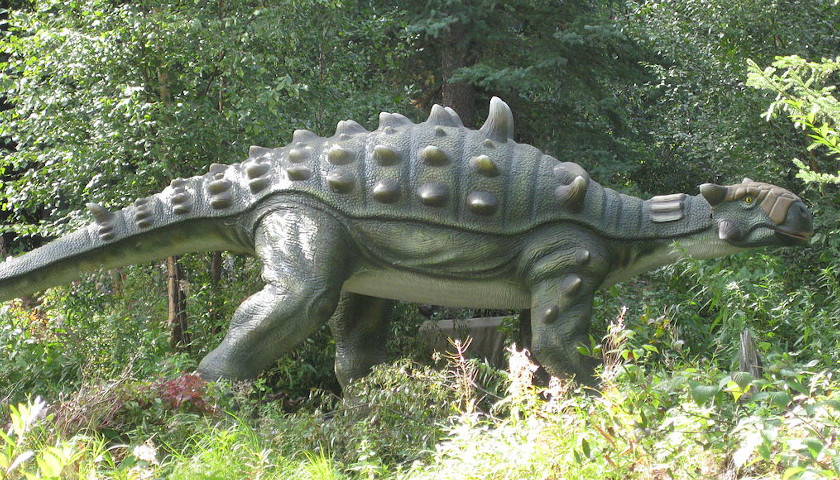by Ross Pomeroy
The Gobi Desert today is a desolate place, but millions of years ago it seems to have been brimming with life. The Baruungoyot Formation in southern Mongolia reveals as much. Scientists have unearthed a dazzling array of fossils – ancient mammals, lizards, and, of course, dinosaurs.
It was here that a team of researchers primarily based out of Seoul National University and the University of Alberta found an amazingly well-preserved skeleton of an ankylosaur, in such good condition that the team could even tell that the animal died “in a ‘resting posture’, with both forelimbs and hindlimbs folded and tucked underneath the torso.”
Ankylosaurs were long, low-to-the-ground armored dinosaurs known for their armadillo-like appearance and clubbed tails.
The fossil, dubbed MPC-D 100/1359, was actually originally discovered back in the early 1970s, but was never completely excavated. It has since apparently been glanced at and ignored by numerous expeditions over the past four decades.
This apathy was the the current researchers’ gain. Upon excavating and analyzing the skeleton, they found that this ankylosaur seemed to have been surprisingly well-adapted to digging. They explained why in a paper published in today’s issue of Scientific Reports.
They found that the ankylosaur’s vertebrae were extensively fused, which would have made its back very rigid. Moreover, the animal had a reduced number of pedal phalanges – toe bones.
“The high rigidity of the trunk may have stabilized the body during digging with forelimbs,” they wrote. “The reduction of mobility in the hind limbs – caused by the decreased number of pedal phalanges – may have been suitable for anchoring ankylosaurs when they were digging.”
They went on to describe the specimen’s front feet, including its manus – its ‘hand’.
“The metacarpals of ankylosaurid forefeet, including those of MPC-D 100/1359, are arranged in a shallow arc that can increase the stiffness of the forefeet. This shape gives the manus a shovel or trowel-like appearance.”
All of these anatomical features would likely have made ankylosaurs decent diggers. While ankylosaurs didn’t seem to construct and dwell in burrows, they could have dug shallow pits. As the researchers described:
“Anatomical features discussed in this paper could be good supporting evidence for the surface digging ability of ankylosaurids. Taking advantage of digging, ankylosaurids may have been able to dig out roots for food, dig wells to reach subsurface water, or dig into the sediments so they could find supplementary minerals to consume as modern African elephants (Loxodonta) do today.
It was long assumed that ankylosaurids might have hunkered down to defend their relatively soft undersides from predators. Crouching down in the shallow pits they made might have helped them protect their limbs and vulnerable belly parts, and to anchor their bodies so as not to get turned over by large predators.”
Source: Park et al. A new ankylosaurid skeleton from the Upper Cretaceous Baruungoyot Formation of Mongolia: its implications for ankylosaurid postcranial evolution. Sci Rep. 18 Mar. 2021. https://doi.org/10.1038/s41598-021-83568-4
– – –
Ross Pomeroy is a reporter at RealClearScience.
Photo “Ankylosaurus” by Brittney Le Blanc. CC BY-SA 2.0.






